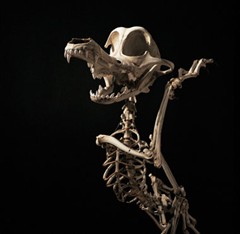 About a dozen years ago, there was a minor to-do in Kentucky over the health hazards of burgoo—specifically the possibility that the consumption of squirrel brains could lead to some variant of Creutzfeldt-Jakob Disease. The state’s government thus engaged in a pointed campaign to discourage the consumption of roadkilled squirrels, the brains of which are a key component of traditional burgoo recipes.
About a dozen years ago, there was a minor to-do in Kentucky over the health hazards of burgoo—specifically the possibility that the consumption of squirrel brains could lead to some variant of Creutzfeldt-Jakob Disease. The state’s government thus engaged in a pointed campaign to discourage the consumption of roadkilled squirrels, the brains of which are a key component of traditional burgoo recipes.
Yet was such a campaign anti-environmental? The tide certainly seems to be turning in favor of roadkill consumption:
The first rule of sustainability is that humanity should use abundance, and there is sadly an abundance of roadkill; at one famed US junction (Highway 27 at Lake Jackson near Tallahassee, Florida), a turtle has a 98.86% chance of being squished, while on our roads the People’s Trust for Endangered Species (PTES) estimates that 1-2% of the national population of hedgehogs, around 15,000, is killed on roads each year. Secondly, carrion appeals to those who hate waste and, as one prolific UK roadkill consumer puts it, out of 40 carcasses found here, 20 will be edible, which may seem like good odds for something that’s free. Finally and sensationally, animal rights campaigners tend to give roadkill the green light, including Peta, which deems roadkill meat acceptable fodder, as it’s meat that hasn’t come courtesy of the “barbaric” meat industry.
Our big question upon reading this piece: who is this “prolific UK roadkill consumer” that the author cites, and how does he or she ascertain the edibility of a flattened animal?
(Image via Hyungkoo Lee’s ingenious cartoon skeletons series)


Like gas stations in rural Texas after 10 pm, comments are closed.